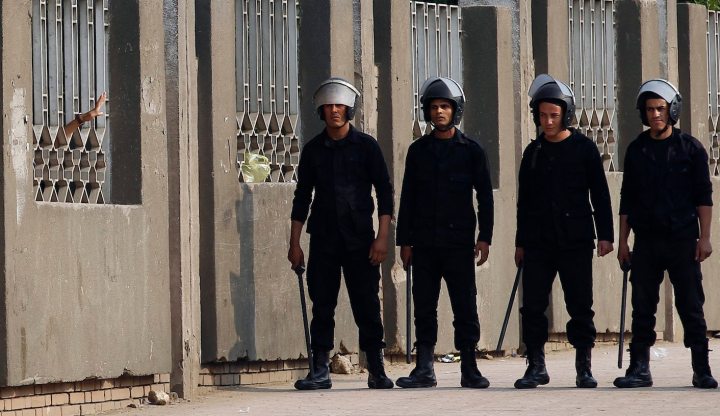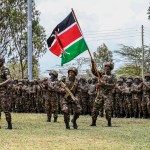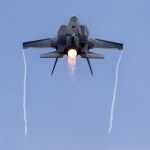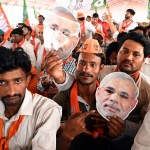Newsdeck
Egypt police fire teargas to clear Tahrir Square

Egyptian police fired teargas to drive protesters out of Cairo's Tahrir Square on Tuesday, breaking up a demonstration commemorating 42 protesters killed two years ago while opposing the government that took power after Hosni Mubarak's downfall. By TARREK FAHMY and MAGGIE FICK
The rally was aimed against people the protesters felt had “betrayed” the revolution – Mubarak loyalists, the military council that ruled for 17 months after his fall and the Islamist Muslim Brotherhood which won subsequent elections but was ousted by the military in July.
But many in the crowd voiced their desire to overthrow what they called the new “military junta”, the government installed by the army after removing Islamist President Mohamed Mursi.
Several hundred riot police moved in shortly before midnight to clear the few dozen protesters still in Tahrir Square, a Reuters reporter said. Protesters threw rocks and fireworks but left the square shortly after the security forces moved in.
A security official said the police decided to clear the square after protesters had tried to storm the headquarters of the Arab League. The authorities would allow them to remain in nearby streets, the official added.
“Down with the military regime,” the protesters chanted earlier in the day, a common refrain during the period of army-led government that followed Mubarak’s downfall.
Supporters of army chief General Abdel Fatah al-Sisi, who promised stability and elections when he overthrew Mursi in July, also showed up at Tahrir but were chased away by activists.
The protesters said the goals of the uprising that toppled Mubarak in 2011 had not been met and accused the security forces of acting with impunity in the intervening two years.
Security forces have killed hundreds of Muslim Brotherhood members since Mursi was toppled. Thousands have been arrestedand the group has been outlawed.
“I am not for the Brotherhood. But I sympathise with them because of what happened at Rabaa,” said high school student Salma, referring to a pro-Mursi protest camp in Cairo that was crushed by security forces in August.
“It was a horrible massacre. There was more freedom under Mursi.”
Mubarak’s downfall raised hopes for more political freedoms but Egypt has stumbled through its transition. Since Mursi’s removal, a wave of militant attacks against the state hasfurther clouded Egypt’s political outlook.
A Sinai-based militant group, Ansar Bayt al-Maqdis, claimed responsibility for the assassination on Monday of a high-ranking security officer, according to a statement posted on a militant Islamist website. Mohamed Mabrouk, the officer, was shot dead outside his home in northeast Cairo.
During his troubled year in office, Mursi alienated many Egyptians who accused him of trying to give himself sweeping powers and mismanaging the economy.
The army’s subsequent takeover has raised questions about whether Egypt will achieve the democracy hoped for by the activists who took to Tahrir Square in 2011.
“We have a president in name but we know Sisi is really in charge. We want freedom and democracy and the military don’t know those things,” said university student Marina Samir, 19.
Hadiga al-Hanawy, among about 1,000 demonstrators moving through central Cairo towards the Tahrir area, said: “We do not want Sisi as president. He is a strong defence minister and he should remain in that position. We want a civilian leader.”
Many Egyptians believe Sisi would become president if he ran for office.
On nearby Mohamed Mahmoud Street, the scene of the 2011 clashes, a wall that street artists used to express revolutionary ideas was covered in coats of paint resembling the pattern of military fatigues.
On Facebook, artists explained that the wall “got a new coat of paint last night. Like the military trying to hide the truth, all the graffiti is now hidden under pink camouflage.”
On Monday, Prime Minister Hazem el-Beblawi visited Tahrir to lay the cornerstone of a planned memorial in the square. The government says the monument will honour the “martyrs” not only of the 2011 anti-Mubarak uprising, but also of what it calls the “June 30 revolution,” referring to the date of mass disturbances that precipitated Mursi’s ouster.
Activists say it insults the memory of protesters killed.DM
(Additional reporting by Seham Eloraby; Writing by Michael Georgy/Tom Perry; Editing by Sonya Hepinstall and Jackie Frank)
Photo: A protester (L) makes the four-fingered gesture through a hole in a fence, near a line of riot police during protests at Cairo’s Nasr City district, November 19, 2013. Police fired teargas to disperse a crowd of several hundred people in Cairo’s Tahrir Square on Tuesday, two years after 42 were killed in protests against military rule. The “Rabaa” or “four” gesture is in reference to the police clearing of the Rabaa al-Adawiya protest camp on August 14. (REUTERS/Amr Abdallah Dalsh)



















 Become an Insider
Become an Insider